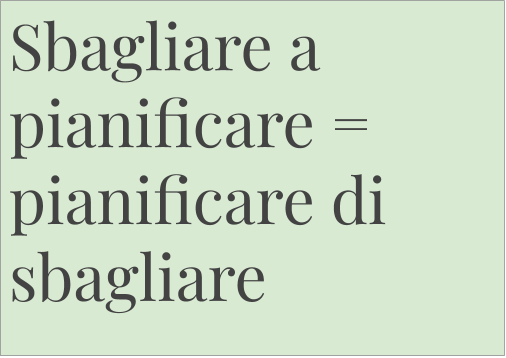The best plans of mice and men fail. So stop working on the best plan possible and start working on a plan that will work!
Rule number 1) Work on a simple plan rather than a complicated, over detailed and too long-term one. The plans that work should be logical, easy to understand by the people who have to implement them and they should be convenient to track for the project managers.
REMEMBER: the project plan should only as detailed as you are prepared to follow up on each task in the plan.
Rule number 2) Plan only as far as you can confidently do so. Plans beyond some points won’t be accurate and they will have a low chance of happening the way you plan them now. So use the rolling wave planning tecnique. As a project manager you will need to keep planning e.g. plan a stage in detail and plan the following stages without details.
Rule number 3) Involve in the planning the people who will do the work. Because they know! They know more than you about their jobs, they know how long it takes to do something, because they have done it for years! They know what needs to be done, how it is best to do it, and they will probably give you precious insights and also provide you with workaround solutions in case something happens.
Rule number 4) If you forget a piece of work that needs to be done it’s unlikely that your projects will go as planned. In order to make sure you cover all deliverables and all activities that need to be done you can do 3 things: create a project definition document or a project charter that describes the goal and main deliverables of the project; create a breakdown of the work to be done; think of the deliverables of each oragnizational function involved (Legal, IT, Marketing, Administration, Production and so on);
Rule number 5) The slipery slopes of projects: The most difficult part of projects are the unknowns. It’s obvious if you think about it but you need a bit of experience to see them. First of all if there are no unknowns it’s not a project you are working on. Projects are new, sometimes unique, and different from our day to day work. Therefore there will always several things that you don’t know and we need to deal with them as soon as possible. So you can make lists of these unknowns and manage them. Some you will classify them as risks, e.g. the risk that something breaks down along the road, what will we do in that case? Some other unknowns will be turned into assumption, e.g. I assume a graphic designer will be able also to make a short video. And then there are the dependecies: some activities cannot be done until some others are completed, the simplest case is that a supplier will not start working until you have signed off a contract. And some suppliers will not give you an estimate until you have sent them a detailed Request For Proposal (RFP) or Statement Of Work (SOW).


Hi,
I guess #3 is probably the most important. I can’t believe how many project managers out there do not involve their implementation team when planning their project.
By the way, this is a nice concise post, and we would really like to republish it on PM Hut where many project managers will benefit from it. Please either email us or contact us through the contact us form on the PM Hut site in case you’re OK with this.